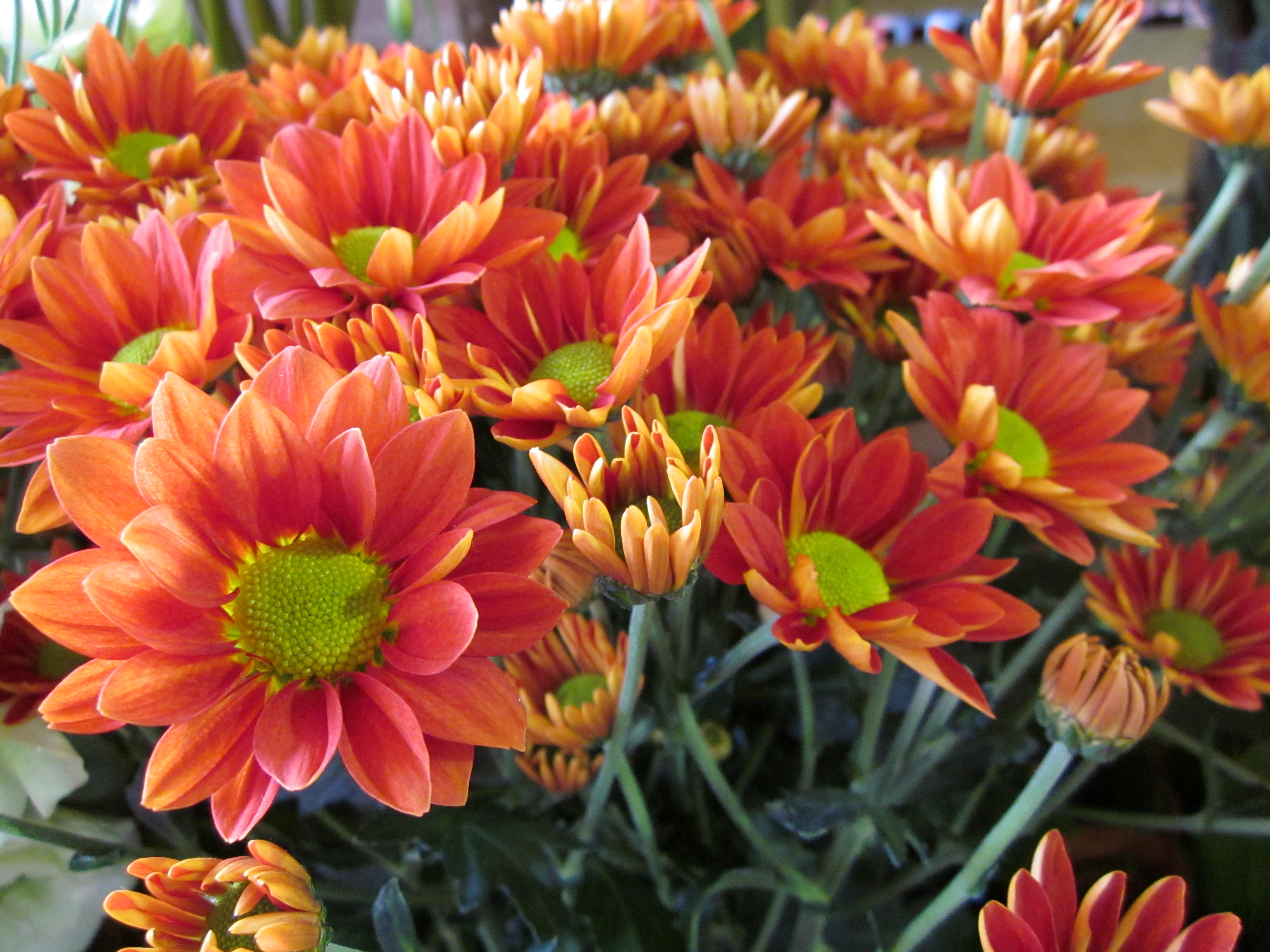Blog
The many faces of chrysanthemum

With Fathers’ Day on our minds, we found ourselves thinking of Mothers’ Day and chrysanthemums. Chrysanthemums could be said to be a more interesting thing to think about than socks, drills or golf balls.
Native to Asia and north-eastern Europe – with most deriving from China – chrysanthemums are now grown all over the world. Chrysanthemums grown for commercial purposes in Australia are grown in glasshouses near capital cities; most are produced around Melbourne.
Chrysanthemums are an ‘old world herb’. They’re related to chamomile and were first cultivated over 3000 years ago. Chrysanthemum leaves and flowers are still widely used for culinary and medicinal purposes. Chrysanthemums are a good source of essential minerals and also vitamins A, B6, C, K, riboflavin, and thiamine. Medicinal uses include using chrysanthemum tea to treat sinus problems and aid recovery from colds and flu.
A single chrysanthemum petal at the bottom of a glass of wine is said to encourage a long and healthy life. Its efficacy may be influenced by the number of so enhanced glasses of wine that are consumed, but there is little information available on that particular topic.
Yellow or white flowers are used to make chrysanthemum tea – a popular sweet beverage in Asia – and chrysanthemum wine is traditionally consumed in Korea and during the Han Chinese Double Yang or Double Ninth Festival.
Chrysanthemums are, in fact, widely associated with special occasions around the world. The Double Ninth Festival occurs on the ninth day of the ninth month of the lunar year; it will be on October 13 in 2013. Chrysanthemums are in bloom in autumn during the festival which is now recognised as Chinese Senior Citizens Day and which celebrates all things related to longevity. Chrysanthemums also occupy a special place in Japanese culture; they are the flower of the Imperial House of Japan. Japan’s Festival of Happiness is also known as the Chrysanthemum Festival.
The colours of chrysanthemums, however, have significance in Chinese, Korean and Japanese cultures. White chrysanthemums symbolise grief and lamentation, whereas red chrysanthemums traditionally symbolise love and affection to Japanese people.
Similar colour significance is observed in some European countries where white chrysanthemums should never be given or used other than in times associated with grief or death. Some other European cultures associate all or only incurved chrysanthemums with grief and death. Italians spotting a newly arrived potted chrysanthemum at someone’s home are likely to solemnly ask who has died.
So why do Australians associate chrysanthemums with Mothers’ Day?
Mothers’ Day appears to have morphed from reputed origins as an ancient Greek day celebrating the mother of the gods, through the 17th Century’s Mothering Sunday (celebrated in Europe on the last Sunday of Lent) to what is now a widespread occasion followed in some form in most countries.